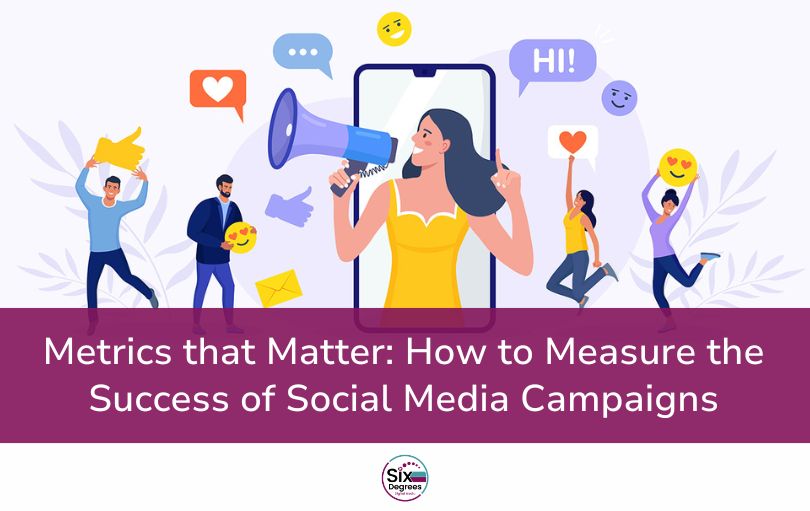Social media can sometimes feel like a black hole of effort. You post consistently, see likes and shares, maybe gain a few followers, but how do you know if it is actually working? Are your posts leading to real engagement, conversions, and audience growth, or are you just collecting vanity metrics?
Many organizations make the mistake of focusing on surface-level numbers while missing the deeper insights that show whether content is driving action. The key is not just tracking numbers, it is tracking the right numbers. Without this, it is easy to waste time on strategies that do not actually move the needle.
In this guide, we will break down the essential social media metrics that matter most. From engagement rates to conversion tracking, you will learn how to measure success in a way that actually shapes your strategy and improves results. Because when you track what truly matters, you are not just posting, you are building a smarter, more effective social media presence.
Why Metrics Matter
It’s easy to get caught up in vanity metrics like likes, follower count, and post impressions. While they look good on the surface, they don’t necessarily translate into meaningful engagement or business growth. Real success comes from deeper insights that show whether your content is truly making an impact.
By tracking the right metrics, organizations can make data-driven decisions instead of relying on guesswork. Are people engaging with your content, clicking your links, or watching your videos to the end? Are your posts reaching the right audience, or just floating in the void? Understanding what’s working (and what’s not) allows you to refine your strategy for better results.
More importantly, the right metrics connect social media efforts to tangible business goals. Whether it’s building brand awareness, increasing audience engagement, or driving conversions, tracking performance helps ensure that every post serves a purpose.
The Essential Social Media
Metrics to Track
To truly understand your social media performance, it’s crucial to focus on metrics that reflect genuine audience engagement and business impact. Let’s explore the key metrics that matter:
1) Engagement Rate: Measuring Real Interaction
Engagement rate goes beyond surface-level metrics by assessing how actively your audience interacts with your content. This includes actions such as likes, comments, shares, saves, and video engagements. These interactions indicate that your content resonates with your audience and sparks interest.
A high engagement rate signifies that your audience isn’t merely scrolling past your posts; they’re stopping to react and interact. This is particularly important for video content, where deeper engagement metrics provide valuable insights:
- Views: The number of times a video has been watched. Different platforms have varying criteria for what counts as a view. For instance, some platforms count a view after three seconds, while others may require longer watch times.
- Watch Time: The total amount of time viewers spend watching your video. Higher watch time suggests that your content holds their attention.
- Completion Rate: The percentage of viewers who watch your video from start to finish. A strong completion rate indicates compelling, well-paced content.
Most social media platforms offer analytics dashboards that provide detailed breakdowns of these engagement metrics, allowing you to track what’s resonating with your audience.
2) Reach & Impressions: Measuring Visibility
Creating compelling content is essential, but ensuring it reaches your audience is equally important. This is where reach and impressions come into play, offering insights into your content’s visibility.
- Reach: Represents the number of unique users who have seen your post. This metric indicates how many different individuals your content has reached, serving as a strong indicator of brand awareness.
- Impressions: Denote the total number of times your post is displayed, including multiple views by the same user. High impressions suggest your content is appearing frequently in feeds, which can signal strong interest or effective targeting.
Why do these numbers matter?
A post with high reach but low engagement might not be compelling enough to hold attention. Conversely, high impressions with repeated views suggest that your content is “sticky”—people are seeing it multiple times, reinforcing your message.
Most platforms provide insights that compare reach versus engagement, helping you determine if your content is merely being seen or if it’s truly resonating.
3) Click-Through Rate (CTR): Measuring Action
Engagement is valuable, but understanding whether your audience takes the next step is crucial. Click-Through Rate (CTR) measures the percentage of users who click on a link within your content, such as to read a blog, sign up for an event, or explore a product.
A high CTR indicates that your content is compelling and your call to action (CTA) is effective. It suggests that your audience finds value in what you’re offering and is motivated to learn more.
CTR is calculated by dividing the total number of clicks by the total number of impressions and multiplying by 100. For example, if a post is seen 1,000 times and 50 people click the link, the CTR is 5%.
A low CTR might suggest that your CTA isn’t strong enough, your link placement needs adjusting, or your content isn’t relevant to the audience.
4) Conversion Rate: Measuring Real Impact
Likes and shares are great, but at the end of the day, social media needs to drive real results. Conversion rate measures how many social media visitors take a desired action, whether it’s signing up for a webinar, downloading a resource, or making a purchase.
This metric is critical because it ties social media directly to business impact. A high conversion rate means your content is not only engaging but also persuasive enough to move people to action. It tells you if your call to action (CTA) is clear and effective, whether your audience finds your offer valuable, and how well your social media strategy supports your overall goals.
To track conversion rate accurately, use UTM links to tag URLs and monitor them in Google Analytics or your CRM. These tools show where traffic is coming from and which posts are driving real engagement beyond clicks.
5) Audience Growth Rate: Measuring Long-Term Reach
A robust social media presence isn’t just about today’s engagement; it’s about cultivating an audience that grows over time. Audience growth rate measures how quickly your following expands, helping you assess whether your content attracts and retains the right people.
Why does this matter?
A consistent increase in followers indicates that your content resonates with new audiences, your brand’s reach and influence are expanding, and more individuals choose to stay connected with your organization.
How to calculate audience growth rate:
- Select a time frame: Choose the period for which you want to measure growth (e.g., monthly, quarterly).
- Gather data: Note the number of followers at the beginning and end of this period.
- Apply the formula: Subtract the initial number of followers from the final number to determine new followers gained. Then, divide this number by the initial number of followers and multiply by 100 to get the growth rate percentage.
For example, if you start with 10,000 followers and gain 500 new ones over a month:
(500 / 10,000) × 100 = 5%
This means your audience growth rate for that month is 5%.
How to Use These Metrics
to Improve Strategy
Tracking social media metrics isn’t just about collecting numbers; it’s about using them to refine and enhance your strategy. The real value comes from analyzing what’s working, identifying areas for improvement, and making data-driven adjustments.
- Analyze High-Performing vs. Low-Performing Posts
Begin by comparing posts with high engagement to those with lower interaction. Identify patterns: Which topics resonate most? What formats (e.g., videos, images, polls) generate the most interest? Understanding these elements helps you focus on content that appeals to your audience.
- Adjust Content Based on Engagement Trends
If video posts consistently receive higher watch times than static images, consider incorporating more video content. Similarly, if posts with storytelling elements or long-form captions lead to more clicks, lean into that style. Tailoring your content to audience preferences can boost engagement.
- Experiment with Timing, CTAs, and Formats
Use analytics to determine when your audience is most active and schedule posts during these peak times to maximize visibility. Test different calls to action (CTAs) to see which prompts encourage the most interaction. Additionally, experiment with various content formats, such as carousels, infographics, or user-generated content, to discover what drives the best results.
Moving Forward
Tracking the right social media metrics helps you move beyond vanity numbers and turn real insights into action. By focusing on engagement, reach, click-through rates, conversions, and audience growth, you can refine your strategy and create content that truly resonates.
If tracking everything feels overwhelming, start simple. Choose a few key metrics that align with your goals, analyze what’s working, and make small adjustments. Over time, these data-driven changes will lead to better engagement, stronger connections, and measurable results.
Need help refining your social media strategy? Let’s talk about how we can turn your data into a game plan that drives real impact.





